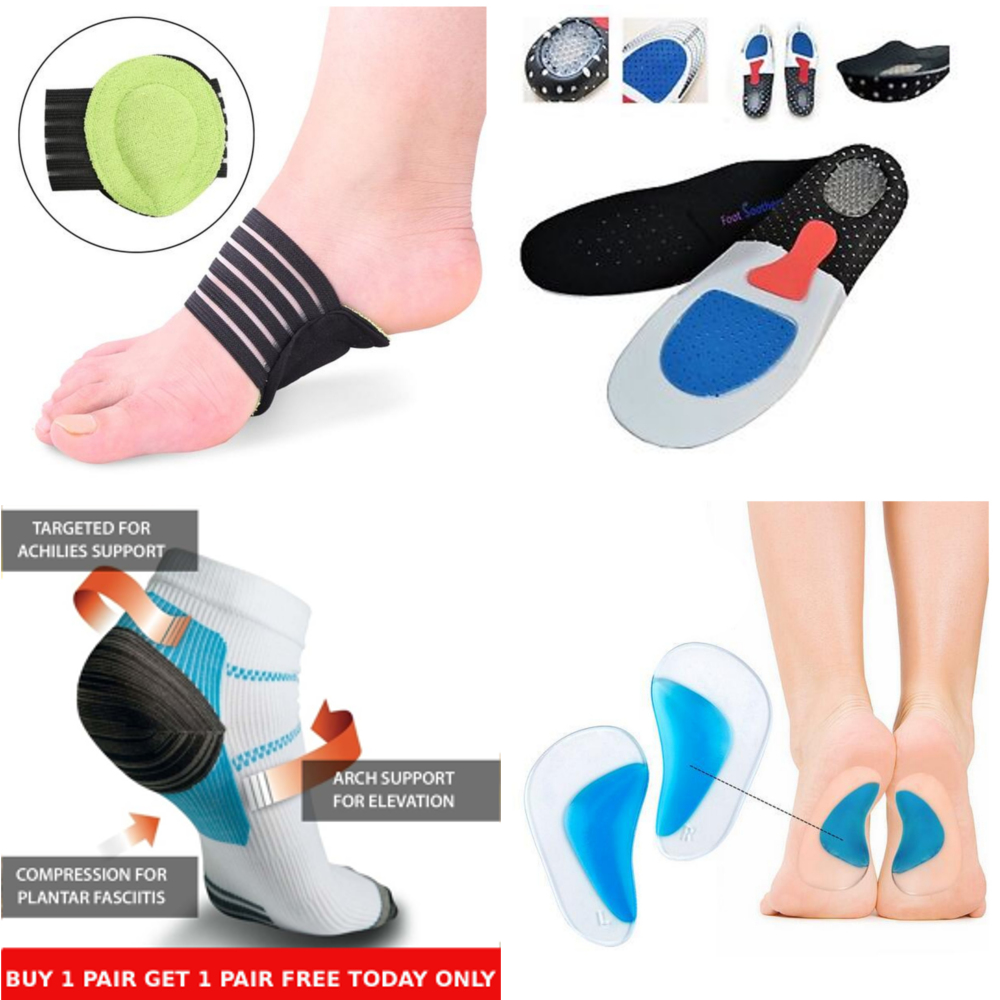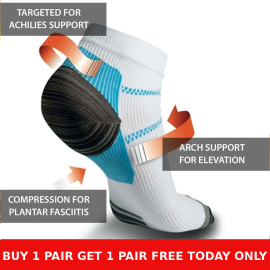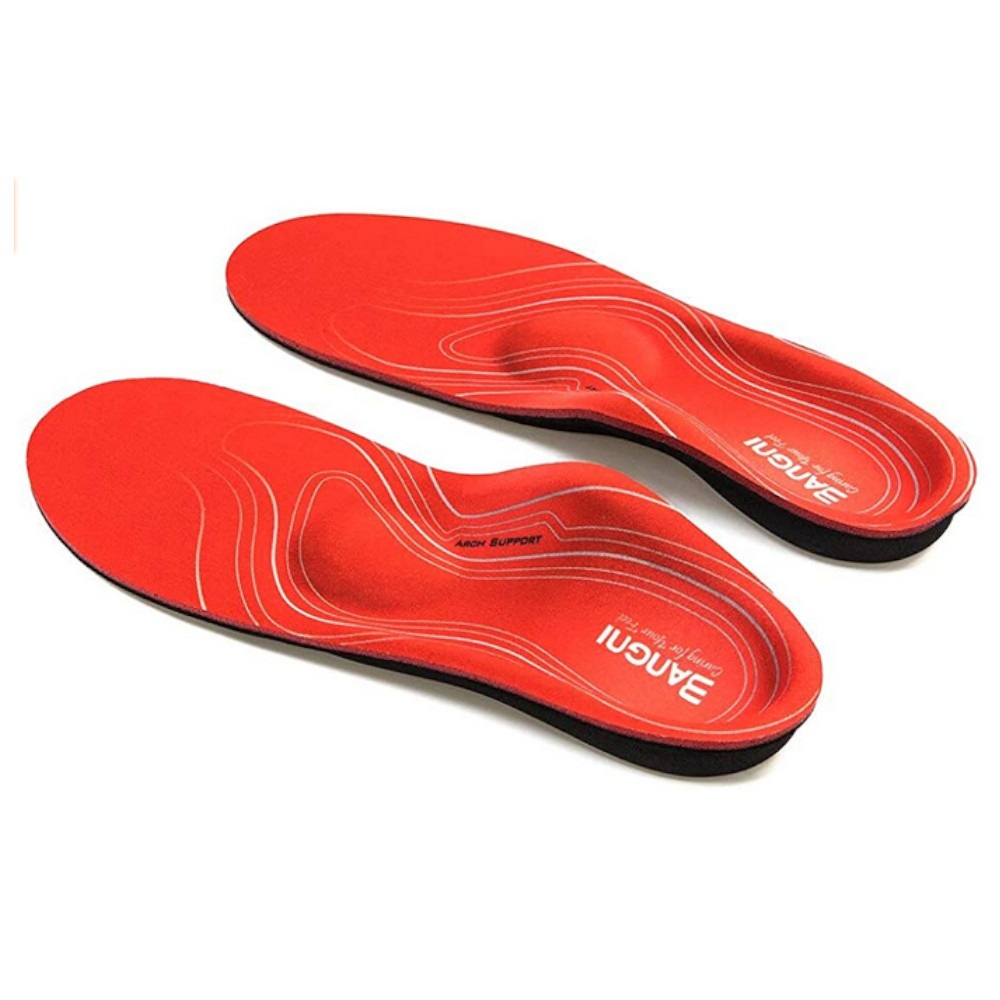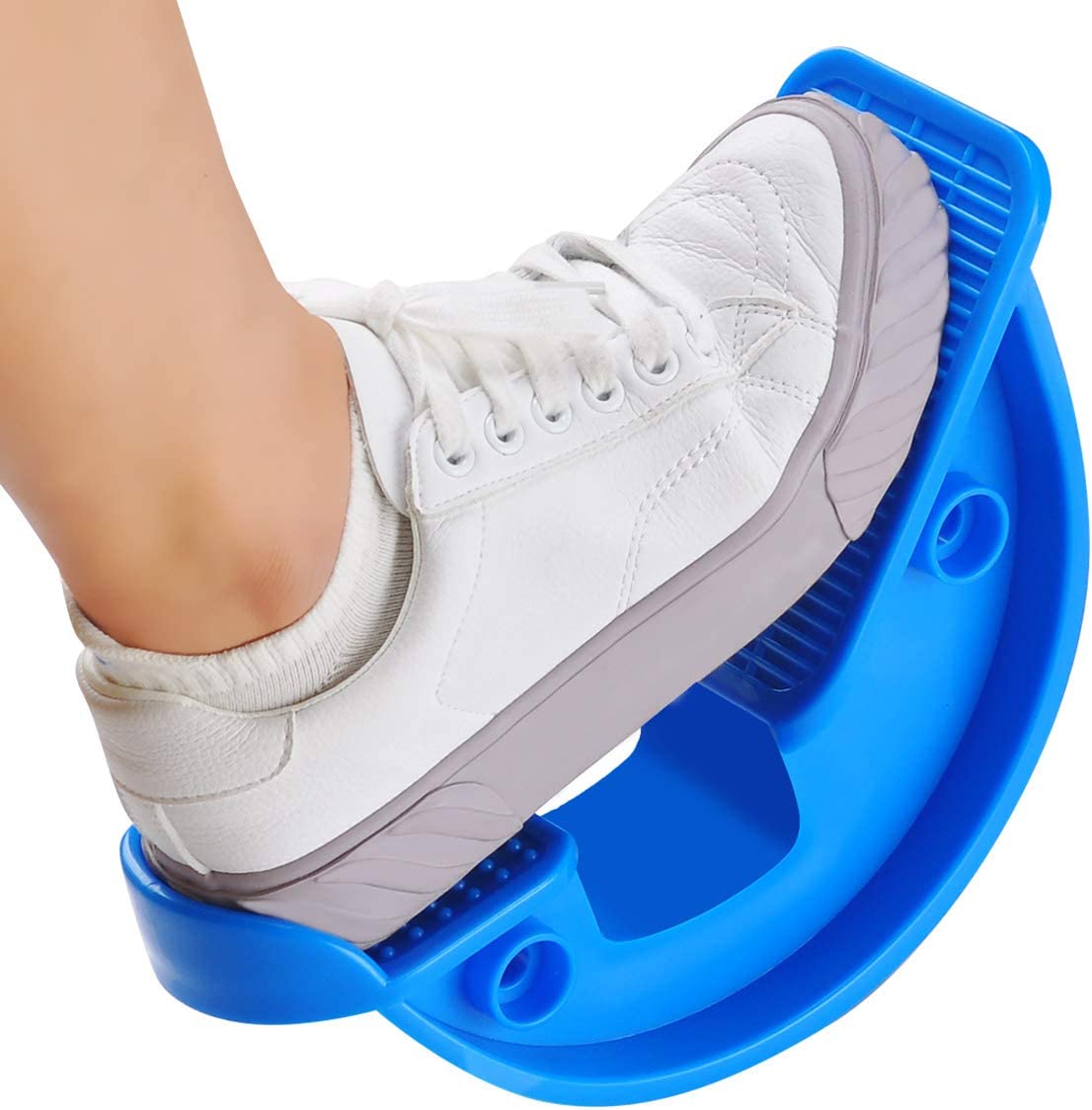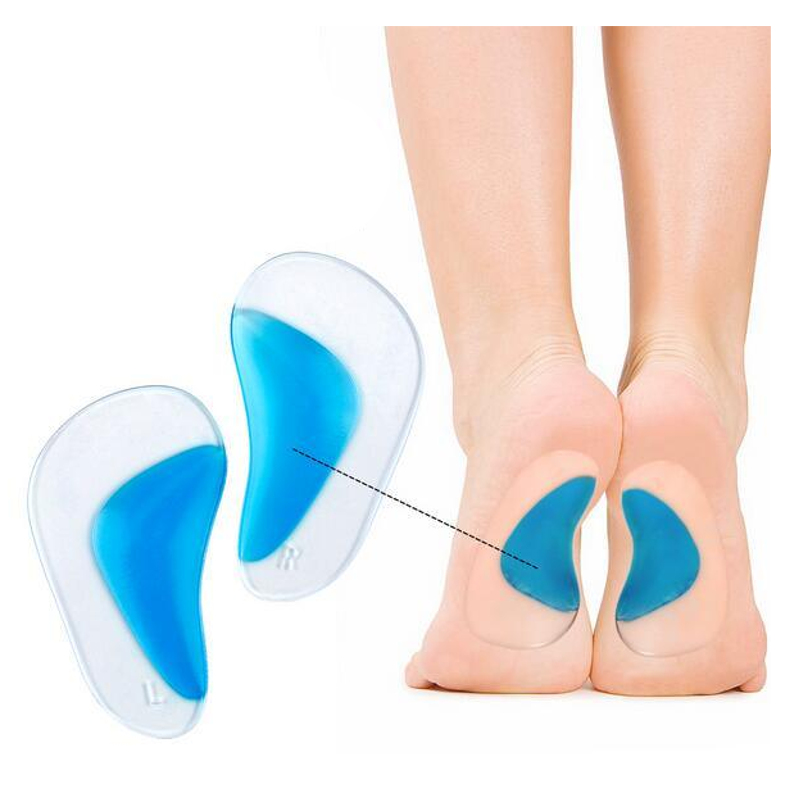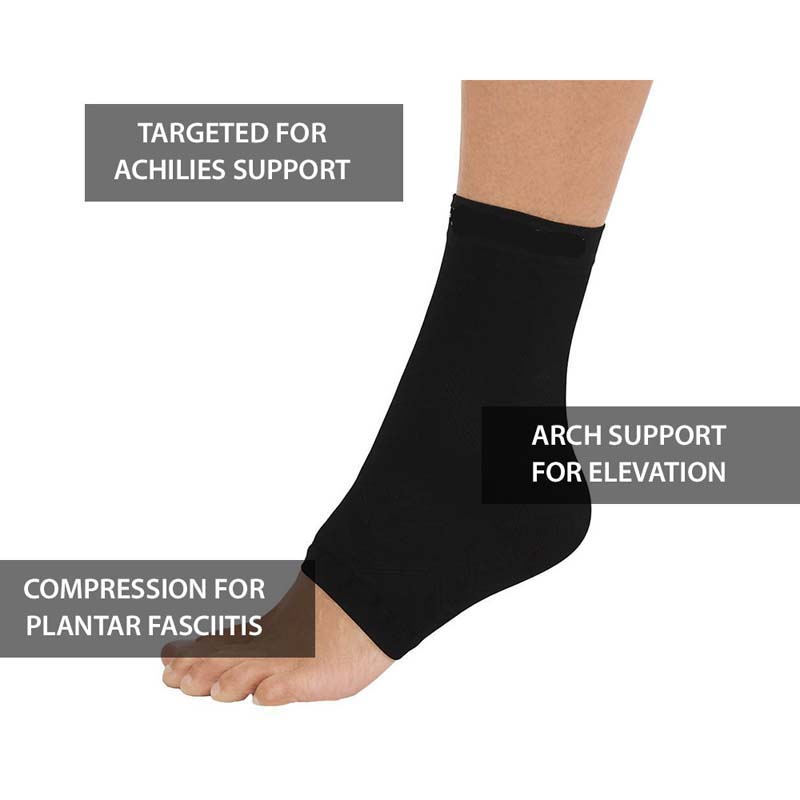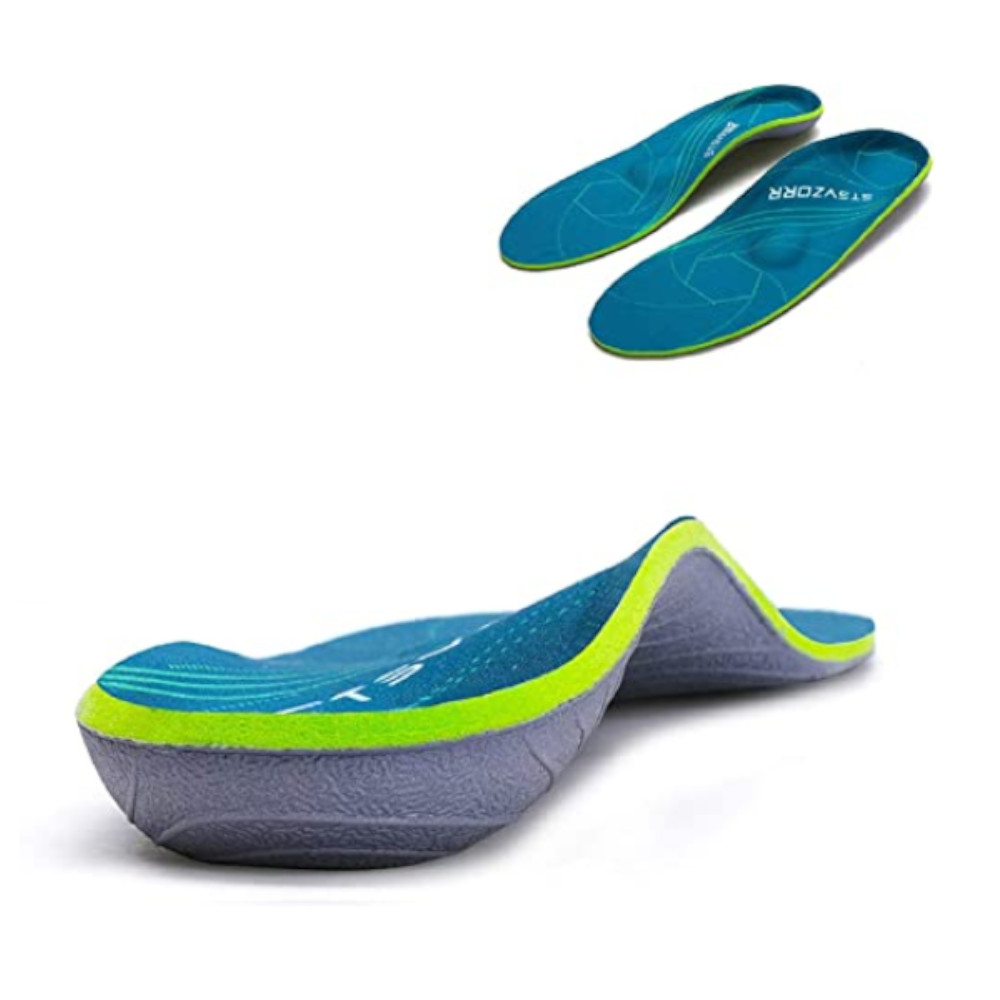Heel Pain Demystified: Plantar Fasciitis Explained

Featured Products for Plantar Fasciitis Foot Pain Relief
Heel pain can be a perplexing and often debilitating issue, with one of the most common culprits being plantar fasciitis. In this blog post, we aim to demystify the world of heel pain by providing a comprehensive understanding of plantar fasciitis, including its causes, symptoms, and potential treatment options. Lets unravel the mystery behind the discomfort many individuals experience in their heels.
What is Plantar Fasciitis?
Plantar fasciitis is a condition characterized by inflammation of the plantar fascia, a thick band of tissue that connects the heel bone to the toes. This inflammation often results in pain at the bottom of the heel, especially during the first steps in the morning or after prolonged periods of rest.
Causes of Plantar Fasciitis:
-
Overuse and Strain:
- Excessive physical activity or prolonged standing, especially on hard surfaces, can lead to overuse and strain on the plantar fascia.
-
Foot Mechanics:
- Issues with foot mechanics, such as flat feet or high arches, can contribute to the development of plantar fasciitis by altering the distribution of weight on the feet.
-
Improper Footwear:
- Wearing shoes with inadequate arch support or those that dont provide proper cushioning can increase the risk of developing plantar fasciitis.
-
Tight Achilles Tendon:
- A tight Achilles tendon can add stress to the plantar fascia, making it more susceptible to inflammation and pain.
-
Age and Weight:
- Plantar fasciitis is more common in middle-aged individuals, and excess weight can contribute to increased pressure on the plantar fascia.
Symptoms of Plantar Fasciitis:
-
Heel Pain:
- The hallmark symptom is a sharp pain at the bottom of the heel, often most intense with the first steps in the morning.
-
Stiffness:
- Stiffness and discomfort in the affected foot, particularly after periods of rest, are common symptoms.
-
Tenderness:
- The heel or arch may be tender to the touch, and the pain can range from a dull ache to a stabbing sensation.
-
Pain During Activity:
- Pain may increase during activities that involve prolonged standing or walking and can intensify after intense exercise.
Treatment Options:
-
Rest and Ice:
- Resting the foot and applying ice can help reduce inflammation and alleviate pain.
-
Stretching Exercises:
- Regular stretching exercises, especially targeting the calf muscles and Achilles tendon, can improve flexibility and reduce strain on the plantar fascia.
-
Orthotic Inserts:
- Custom or over-the-counter orthotic inserts provide additional arch support and cushioning.
-
Supportive Footwear:
- Choosing shoes with proper arch support and cushioning is essential for managing plantar fasciitis.
-
Physical Therapy:
- A physical therapist can guide individuals through exercises to strengthen the foot muscles and improve overall foot function.
-
Medications:
- Nonsteroidal anti-inflammatory drugs (NSAIDs) may be recommended to reduce pain and inflammation.
-
Invasive Treatments:
- In severe cases, treatments such as cortisone injections or surgery may be considered.
Conclusion:
Plantar fasciitis may be a common source of heel pain, but with the right understanding and a proactive approach to treatment, individuals can find relief and regain their mobility. Unravel the mystery of heel pain and take confident steps towards a pain-free and active lifestyle.
Featured Products for Plantar Fasciitis Foot Pain Relief
Latest Blogs
- Taking a Stand Against Heel Pain: Practical Solutions
- Happy Heels, Happy Life: Banishing Foot Pain for Good
- The Road to Relief: Strategies for Combating Heel Pain
- Heel to Toe Wellness: Tackling Foot Pain Head-On
- Foot Pain Decoded: Understanding the Signals Your Feet Send
- Soothing Steps: Natural Remedies for Heel and Foot Pain
- Putting Your Best Foot Forward: Managing Heel Discomfort
- The ABCs of Happy Feet: Beating Heel and Foot Pain
- From Heel to Toe: Navigating Common Foot Pain Issues
- Taking a Step Back: Causes and Remedies for Heel Pain
- Footloose and Pain-Free: Tips for Happy Heels and Feet
- Soleful Solutions: A Guide to Alleviating Heel and Foot Discomfort
- Stepping Into Comfort: Understanding Heel and Foot Pain
- From Pain to Progress: Inspiring Plantar Fasciitis Journeys
- Living a Full Life with Plantar Fasciitis: Success Stories
- Plantar Fasciitis and Exercise: Finding the Right Balance
- The Impact of Stress on Plantar Fasciitis Symptoms
- Plantar Fasciitis: When to Seek Professional Help
- Inflammatory Foods and Plantar Fasciitis: What to Avoid
- Ergonomics and Plantar Fasciitis: A Comprehensive Guide
- The Importance of Rest in Plantar Fasciitis Recovery
- Traveling with Plantar Fasciitis: Tips for Happy Feet
- Plantar Fasciitis and Your Sleep: Improving Rest Quality
- The Psychological Aspect of Living with Plantar Fasciitis
- Plantar Fasciitis and High-Impact Activities: Navigating Risks
- How to Stay Active with Plantar Fasciitis: Practical Tips
- Plantar Fasciitis and Aging: Strategies for Seniors
- Cryotherapy for Plantar Fasciitis: Icy Relief for Your Feet
- Aquatic Exercise for Plantar Fasciitis: Dive into Healing
- Mindfulness and Meditation for Plantar Fasciitis Relief
- Heel Pain 101: A Guide to Plantar Fasciitis
- Finding Relief - Plantar Fasciitis Home Remedies
- The Emotional Toll of Chronic Plantar Fasciitis
- Post-Workout Foot Care for Plantar Fasciitis Sufferers
- DIY Foot Massage Techniques for Plantar Fasciitis
- From Diagnosis to Recoveryc- Navigating Plantar Fasciitis
- Plantar Fasciitis in Children Signs and Solutions
- Plantar Fasciitis and Weight: Impact on Foot Health
- How Nutrition Affects Plantar Fasciitis Recovery
- Yoga for Plantar Fasciitis: Poses for Pain Relief
- Breaking Down Plantar Fasciitis Myths and Misconceptions
- Plantar Fasciitis Stretches - Daily Routine for Relief
- The Link Between Plantar Fasciitis and Flat Feet
- Plantar Fasciitis in Pregnancy - What to Expect
- Desk Job Dilemma - Coping with Plantar Fasciitis at Work
- Plantar Fasciitis in Athletes Strategies for Recovery
- Massage and Plantar Fasciitis A Soothing Combination
- Plantar Fasciitis at Night: Tips for Better Sleep
- Plantar Fasciitis vs Heel Spurs - Understanding the Difference
- The Role of Stretching in Plantar Fasciitis Recovery
- Running with Plantar Fasciitis: Dos and Donts
- Preventing Plantar Fasciitis: Tips for Foot Health
- Natural Remedies for Plantar Fasciitis You Havent Tried
- Heel Pain Demystified: Plantar Fasciitis Explained
- Best Shoes for Plantar Fasciitis: A Comprehensive Guide
- Managing Plantar Fasciitis Pain: Tips and Tricks
- The Complete Guide to Plantar Fasciitis Treatment Options
- 10 Effective Exercises for Plantar Fasciitis Relief at Home
- Understanding Plantar Fasciitis: Causes and Symptoms
- Why do I get Pain in My Feet at Night
- Is pain in your feet a sign of diabetes
- What causes pain in my feet
- Plantar Fasciitis - Why so Painful
- What is that pain in my heel
- Should I Walk with Foot Pain
- How to Treat Ankle Pain
- 10 Best Exercises of Plantar Fasciitis
- Do Compression Socks Help Foot Pain
- Do Insoles Work for Foot Pain
- Best Stretches for Plantar Fasciitis
- 5 Causes of Plantar Fasciitis
- Do Back Posture Braces Actually Work
- Foot pain from walking
- Best Insoles for Plantar Fasciitis
- Pain in heel of foot after Running
- Treatment for Pain in arch of foot
- Pain on top of foot
- Mortons neuroma treatment
- How to remove an Ingrown Toenail
- Foot Heel Spur Pain
- Sore Foot in the Morning
- Suffer Heel Pain in the Morning ?
- Start a running routine
- Running through Fatigue
- Best Achilles Tendonitis and Ankle Excercises
- Causes of Achilles Tendonitis and Ankle Pain
- Plantar Fasciitis Cure and Treatment
- Best Plantar Fasciitis Products
- Causes of Plantar Fasciitis and Heel Spur Pain
- Best Plantar Fasciitis Excercises

